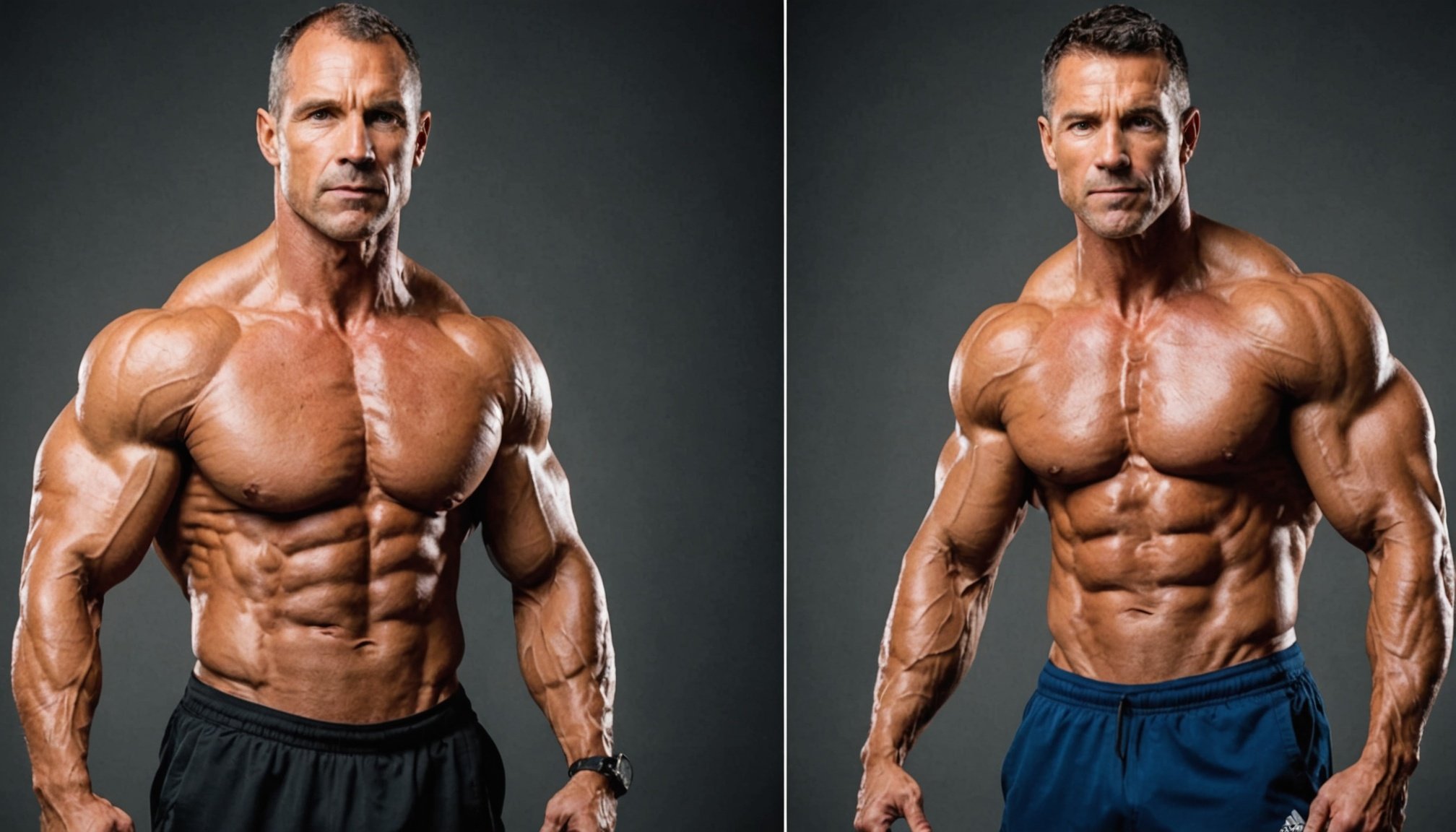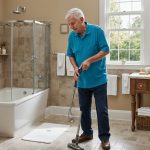Ultimate Guide to Naturally Increasing Muscle Mass for UK Adults Aged 40 and Above
As we age, maintaining muscle mass becomes increasingly important for our overall health, independence, and quality of life. For UK adults aged 40 and above, understanding the factors that contribute to muscle loss and implementing effective strategies to build and maintain muscle mass is crucial. Here’s a comprehensive guide to help you navigate this journey.
Why Muscle Mass Matters as We Age
Muscle mass plays a vital role in our metabolic health, strength, and endurance. As Dr. Oliver Witard, a Reader in Nutrition and Exercise Metabolism, explains, “Muscle mass refers to the total amount of muscle in the body, while quality refers to the functional characteristics of the muscle tissue itself, including strength, endurance and its ability to generate force.”[1]
Also to discover : Mastering Winter Wellness: Your Guide to a Balanced Diet in the UK Chill
As we age, the natural process of muscle ageing, known as sarcopenia, sets in. This can start as early as our 40s, with muscle mass declining by about 1% per year by our 60s[1]. This decline is associated with various detrimental effects, including an increased risk of falls, loss of independence, and metabolic health issues such as obesity and type 2 diabetes.
Understanding the Causes of Muscle Loss
Muscle loss with ageing is a complex process influenced by several factors, including anabolic resistance. Anabolic resistance refers to the body’s reduced ability to respond to protein intake, which is essential for muscle protein synthesis. As we age, we need more leucine, a branched-chain amino acid, to trigger this process[1].
In parallel : Essential Tips for UK Families to Minimize Household Air Pollution
Additionally, recent research has identified specific genes that play a key role in muscle ageing. For instance, the gene USP54 has been found to be highly expressed in older adults and is associated with muscle degradation[2].
The Role of Exercise in Building and Maintaining Muscle Mass
Exercise is a cornerstone in the fight against muscle loss. Here are some key types of exercise and their benefits:
Resistance Training
Resistance training is essential for building and maintaining muscle mass. This can include lifting weights, using resistance bands, or performing body-weight exercises like push-ups and squats. The key is to focus on compound movements that challenge multiple muscle groups and joints, such as squats, lunges, and deadlifts[3][4].
Tips for Effective Resistance Training:
- Start with manageable weights and increase the load as you build strength.
- Aim for two to three sessions per week, targeting each major muscle group.
- Incorporate exercises that mimic real-life movements, such as functional training.
- Ensure good form and technique to avoid injury.
Functional Training
Functional training involves exercises that mimic everyday activities, such as squats, lunges, and lifting movements. This type of training not only builds strength but also prepares you for daily tasks, reducing the risk of injury and improving overall mobility[3].
Examples of Functional Training Exercises:
- Squats
- Lunges
- Step-ups
- Balance exercises
Cardiovascular Exercise
While resistance training is crucial for muscle building, cardiovascular exercise also plays a role in overall health. Activities like walking, cycling, or swimming can help maintain cardiovascular health and support muscle function. However, it’s important to balance cardio with resistance training to avoid overdoing it and potentially losing muscle mass[5].
Nutrition: The Fuel for Muscle Growth
Proper nutrition is vital for building and maintaining muscle mass. Here are some nutritional tips:
Protein Intake
Protein is the foundation of muscle growth and maintenance. Older adults need to ensure they consume enough protein to support muscle protein synthesis. Aim for 20-30 grams of protein per meal, and consider supplementing with fish oil capsules, which can interact beneficially with protein[1][3].
High-Protein Foods:
- Eggs
- Lean meats
- Fish
- Beans
- Tofu
Omega-3 Fatty Acids
Omega-3 fatty acids, particularly those found in oily fish, have been shown to protect against muscle loss with ageing. Including one portion of oily fish per week in your diet can be beneficial[1].
Balanced Diet
A balanced diet that includes a variety of fruits, vegetables, whole grains, and healthy fats is essential. Avoid high-calorie, high-fat diets that can lead to body fat accumulation and reduce muscle-to-fat ratio[4].
Practical Tips for Building and Maintaining Muscle Mass
Here are some practical tips to help you on your journey:
Use It or Lose It
Any physical activity, whether it’s completing household tasks, walking, or lifting light weights, will help keep your muscles active and strong. The mantra “use it or lose it” is particularly relevant as we age[1].
Stay Active Throughout the Day
In addition to structured workouts, staying active throughout the day is crucial. Simple activities like gardening, taking the stairs, or walking instead of driving can make a significant difference in maintaining muscle mass and overall health[3][5].
Prioritize Rest and Recovery
Rest and recovery are as important as exercise. Ensure you get enough sleep, as muscle repair and growth occur during deep sleep. Also, incorporate recovery activities like stretching, yoga, or gentle walks to keep your muscles flexible and prevent soreness[3].
Example Workout Routine
Here’s an example of a weekly workout routine tailored for older adults:
| Day | Exercise Type | Examples |
|---|---|---|
| Monday | Resistance Training | Squats, lunges, deadlifts, bench press |
| Tuesday | Cardiovascular Exercise | Walking, cycling, swimming |
| Wednesday | Rest Day | |
| Thursday | Functional Training | Step-ups, balance exercises, lifting movements |
| Friday | Resistance Training | Push-ups, rows, leg press |
| Saturday | Cardiovascular Exercise | Walking, cycling, swimming |
| Sunday | Rest Day or Light Activity | Gentle walk, stretching, yoga |
Real-Life Examples and Success Stories
Many individuals have successfully maintained or even increased their muscle mass in their 40s and beyond through consistent exercise and proper nutrition.
Anastasia Sullivan’s Story:
Anastasia started training with a personal trainer in 2013 and has seen significant improvements in her strength and mobility. She emphasizes the importance of patience and encouragement from her trainer, highlighting that “the training is hard work, but the result is worth it.”[5]
Building and maintaining muscle mass as we age is a achievable goal with the right approach. By incorporating resistance training, functional training, and a balanced diet rich in protein and omega-3 fatty acids, you can significantly improve your muscle health.
As Dr. Lívia Santos from Nottingham Trent University notes, “We want to identify genes that we can utilise to delay the impacts of the ageing process and extend the health-span.” While genetic research is ongoing, the current evidence strongly supports the benefits of exercise and proper nutrition in mitigating muscle loss[2].
So, let’s keep lifting, fueling, and moving in a way that empowers us. Remember, age is just a number, and strength is for life.
Additional Resources
For further guidance, here are some reliable resources:
- National Health Service (NHS) Guidelines: The NHS recommends regular exercise for older adults to maintain health and independence.
- American College of Sports Medicine (ACSM) Recommendations: The ACSM provides detailed guidelines on exercise and physical activity for older adults.
- National Institute on Aging (NIA): The NIA offers resources and tips on healthy ageing, including exercise and nutrition advice.
By following these guidelines and tips, you can embark on a journey to build and maintain muscle mass, ensuring a healthier, more independent life as you age.











